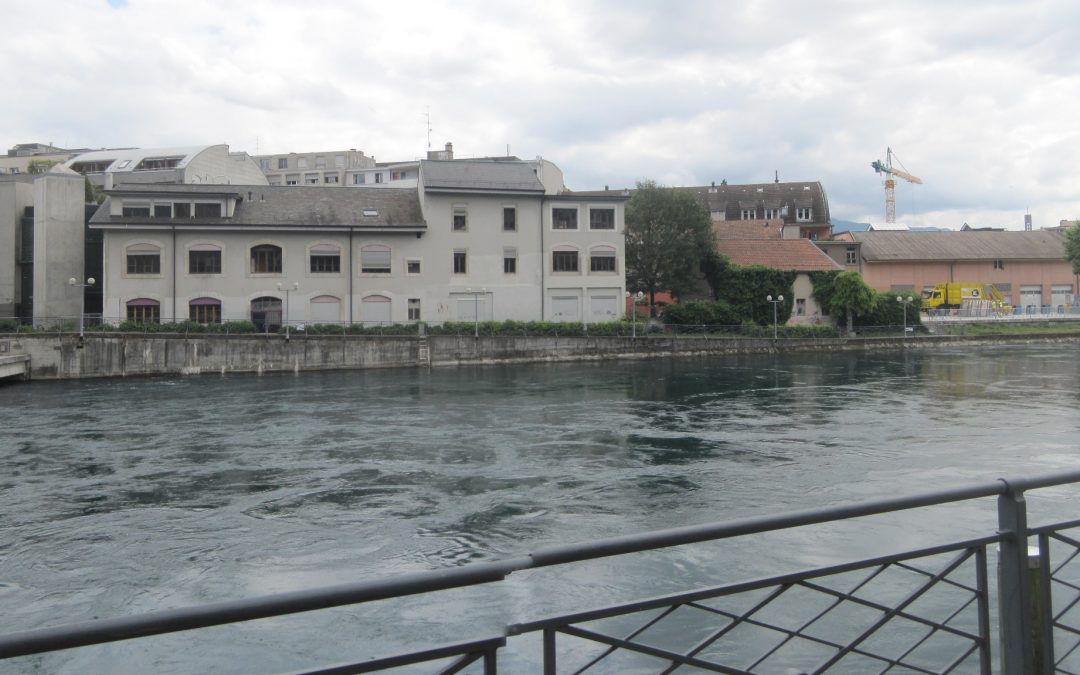
2016-09-27
Dams and hydraulic Engineering (Flooding management)
- Client: State of Geneva – Department of Water Ecology
- Assignment: Diagnosis, Study and Pre-project phase
- Total cost of the assignment: 30k CHF
- Completion date: 2013-2014
PROJECT DESCRIPTION AND CHARACTERISTICS
The Arve, a tributary on the left bank of the Rhone below Lake Geneva, carries very large quantities of sediments. At the arrival of the Rhone in the reservoir of Verbois (Geneva), these sediments are deposited and fill the restraint. In order to limit sedimentary debris harmful to the environment, studies on the management of sediments accumulating in the Verbois reservoir have been undertaken and have led to defining different sediment management scenarios.
GEOS’s mission was to determine, for each sediment management scenario at the Verbois dam, which areas of Geneva would be flooded in the current state of protection and then design and quantify flood protection measures. The study area extends to the Rhone from the Pont du Mont-Blanc to the junction and to the Arve from the Reichlen dam to the junction.
The study was carried out in the following stages:
- Protection objectives according to the type of object;
- Mapping of areas to be protected;
- Detailed local analysis of areas to be protected and study of flood mechanisms;
- Design of appropriate protective measures (overall and individual structural measures);
- Measurements and calculations.
A total of 8 vulnerable areas were identified and were the subject of a brief preliminary design study, including the Rhône wharf and the Mont Blanc parking.
ASSIGNMENT
GEOS has carried out the following missions:
- Diagnosis of the existing;
- Study of protective measures;
- Pre-project brief.
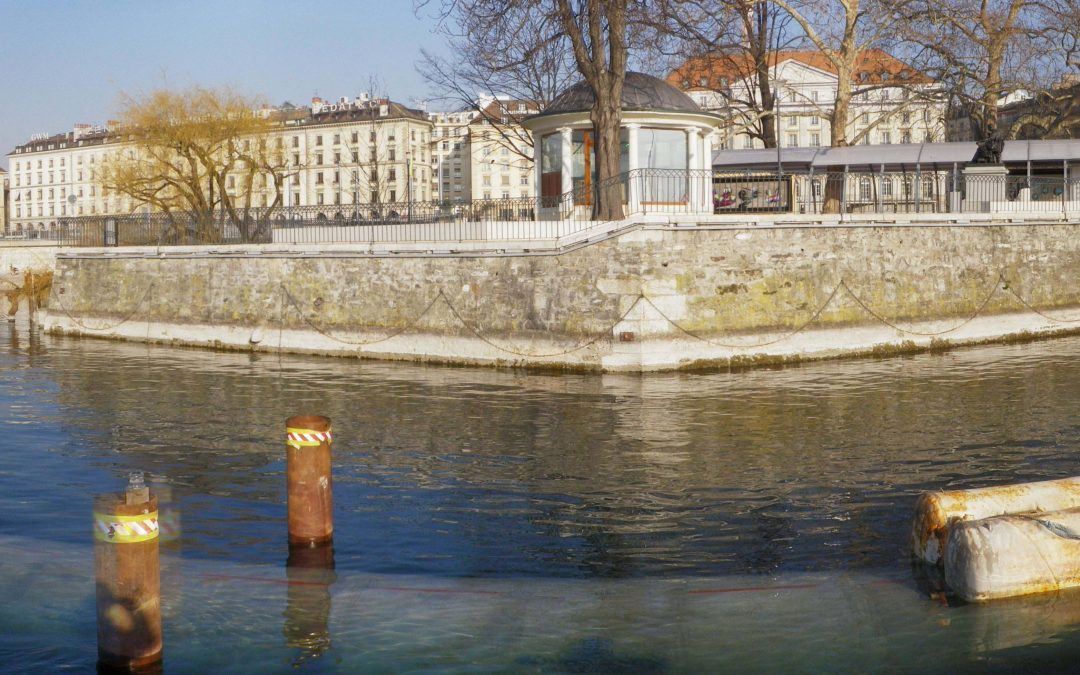
2016-09-27
Dams and hydraulic Engineering (Sub-lake pipe)
- Client: Geneva Industrial Services (GIS) – Shared Services
- Assignment: Project management
- Total cost of work: 16,500,000 CHF excluding VAT
- Total cost of the assignment: 450,000 CHF excluding VAT
- Completion date: 2009-2014
PROJECT DESCRIPTION AND CHARACTERISTICS
New sub-lake filtered water network DN 1500 between the Prieuré treatment station and the Arquebuse pumping station to replace the existing pipe constructed in 1953. The project consists of replacing and increasing the capacity of filtered water that connects about 60% of the population of the City of Geneva for drinking water.
The principle of conducting the pipe consisted of assembling pipe sections from a sheet-metal concrete element on the bank. The sections thus obtained were closed to maintain the volume of air and to make them floatable during the conveyance to the place of installation.
Each section was then submerged and nested under water by jacks to the section previously laid and filled with drinking water from the network. The laying operation was long. Hence, the pipe was emptied thanks to its “melting” characteristic (the pipe does not float even when filled with air) to disinfection and making it drinkable.
The main constraints of the project were:
- Work in a lake and river environment. Since the Rhône River was used as a flow regulator for the waters of Lake Geneva, the works had to be planned and carried out in close coordination with the authorities responsible for regulating the flows of the Rhone.
- Maintenance of the draft in the Bay of Geneva to allow navigation of the Compagnie Générale de Navigation (CGN) vessels, the recreational boaters and all water activities (fishing, water skiing).
- Passage of the project under 7 low height bridges or passways.
- Management of the pipe volumetry proposed by the contractor and the selected variant of construction (company variant).
- Constraints of implementation in plan and altimetry imposed by the Services of control of the maintenance of the flow of the Rhone.
- Management of specific site safety constraints in lake and river environments for assemblers.
- Crossing of numerous water suction strainers of the lake and submerged cable networks.
- Crossing the project into an area of archaeological remains.
TECHNICAL CHARACTERISTICS:
- Diameter of the pipe: DN 1,500 mm
- Length of the replaced section: 2,400 m, of which 1,600 m are laid under lakes and 800 m in river waterways.
- 14 installation sections
- Components of 4.20 m, specific weight of 12 tons, ie 550 elements
- Conduit transport rate: 2,800 l / s
- Installation depth: 4 to 6 m
- Supports by piles of 21m in wood and of adjustable heights.
- Sheet pile connecting cells to allow connection to the existing distribution network maintained in service.
- Maintenance of the potability of the filling volume of the installed pipe, in spite of a method of laying with the advancement.
ASSIGNMENT
As a civil engineer and specialist in lacustrine works, GEOS has carried out a complete project management mission with the following services:
- Preliminary Studies
- Pre-Project Phase
- Design of Works
- Call for tenders
- Execution Project
- Construction management
- Commissioning and completion.
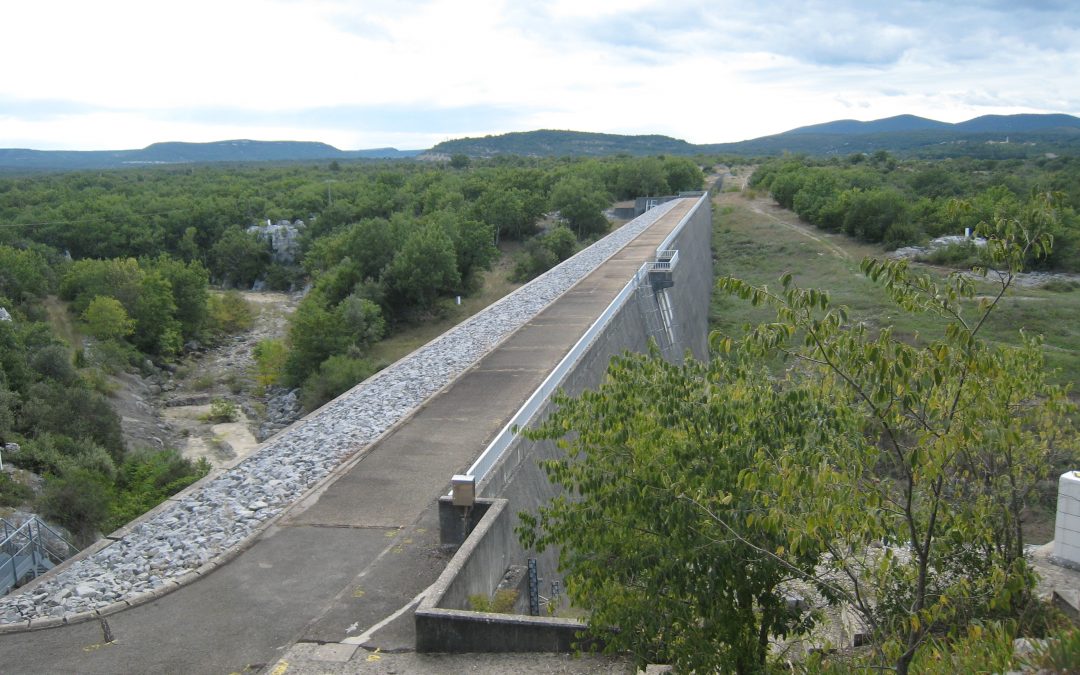
2016-09-27
Dams and hydraulic Engineering (Dams and dykes)
- Client: General Council of Gard
- Assignment: Risk Study
- Completion date: 2014
- Total cost of the assignment: 20 k €
PROJECT DESCRIPTION AND CHARACTERISTICS
The Conqueyrac dam (class B) is located on the Vidourle in the commune of Conqueyrac. It belongs to the General Council of Gard. It is a rockfill dam arranged at a ladder wall (scales) with an upstream waterproofing mask in reinforced concrete on the left bank. On the right bank, it is complemented by a dam concrete plate with overflowing threshold. This dam ensures the function of clipping of the floods, during heavy downpours, so called épisodes cévenols. Its main dimensions are the following:
- Length of the dam: 560 m
- Height on foundation: 17 m
- Volume stored on the PHE: 12 Million m³
ASSIGNMENT
- Risk Study
- Study of propagation of rupture wave
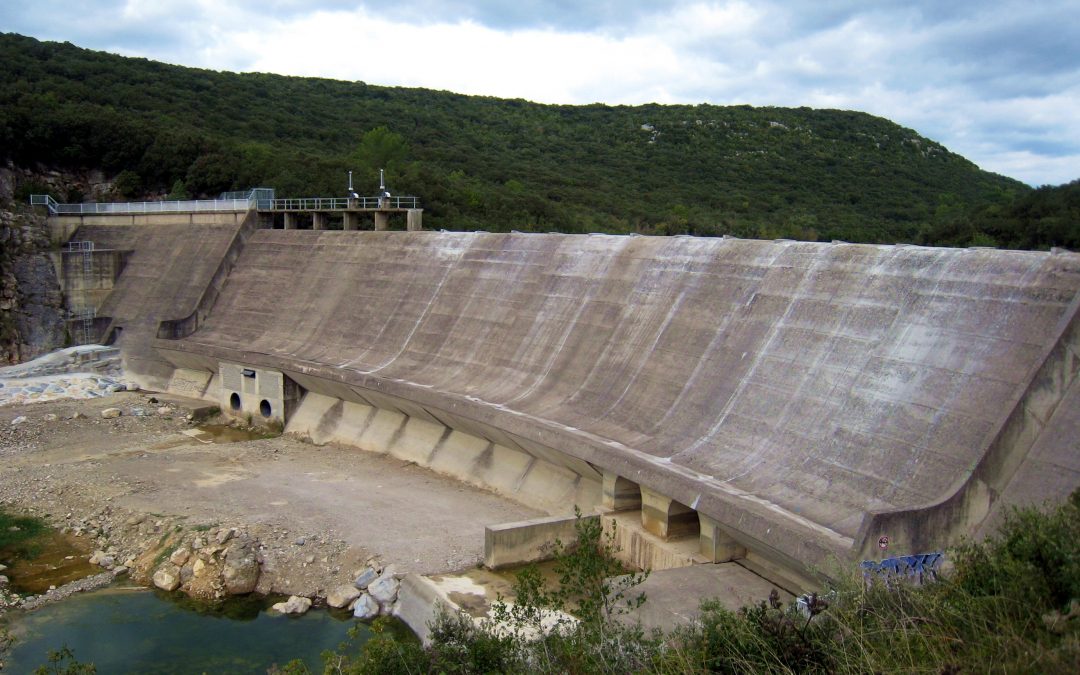
2016-09-27
Dams and hydraulic Engineering (Dams & dykes)
- Client: General Council of Gard
- Assignment: Risk Study
- Completion date: 2014-2015
- Total cost of the assignment: 50 k €
PROJECT DESCRIPTION AND CHARACTERISTICS
The Rouvière dam (class B) is an arched-weight structure designed for flood control of Crieulon, a tributary of the left bank of the Vidourle. Its main dimensions are:
- Length of the dam: 150 m
- Height on foundation: 18 m
- Plan radius of curvature: 125 m
ASSIGNMENT
- Risk Study
- Study of propagation of rupture wave
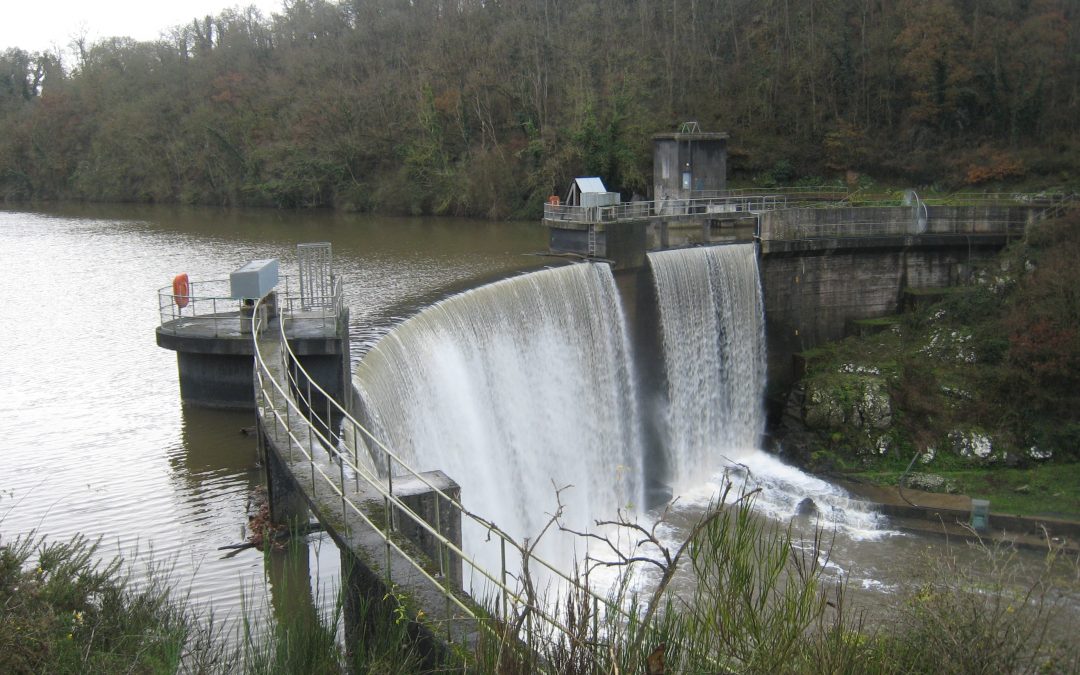
2016-09-27
Dams and hydraulic Engineering (Dams and dykes)
- Client: DREAL Bretagne
- Assignment: study of hazards
- Completion date: 2014-2015
- Total cost of the assignment: 20 k €
PROJECT DESCRIPTION AND CHARACTERISTICS
The Pont Rolland dam is located in the bay of Morieux (Côtes d’Armor) on the river “Le Gouessant” about twenty kilometers east of the town of St Brieuc. Shellfish farms are located downstream of the dam.
The main characteristics of the dam are the following:
- Reinforced concrete vaulting dam;
- peak length: 102.60 m;
- height on foundation: 22,20 m (16,50 m above natural ground level);
- 60 m spillway capable of evacuating a flow of 200 m³/s;
- Wagon type bottom valve: capacity: 31 m³/s.
ASSIGNMENT
- Risk Study
- Study of propagation of rupture wave





